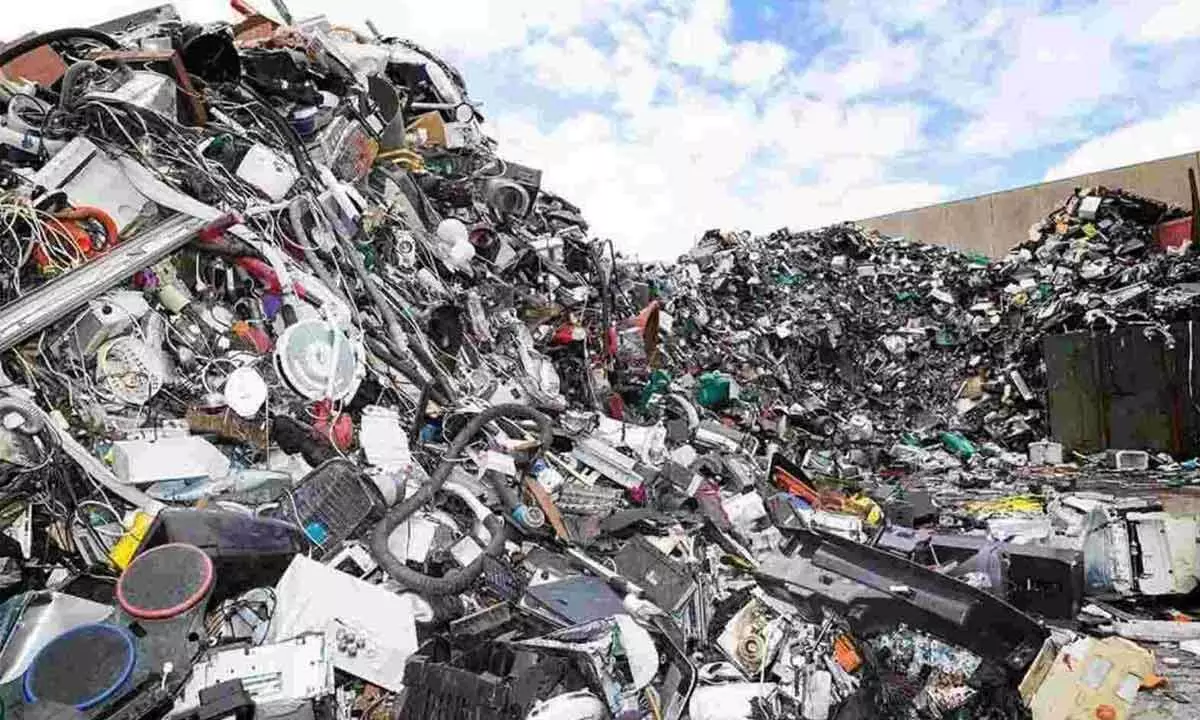E-waste space offers lucrative biz proposition
e-waste recycling is a viable business model since it contains various metals and rare earth minerals; e-waste constitutes 50% ferrous metal and steel, 21% plastic, 13% non-ferrous metals and 16% hazardous material
image for illustrative purpose

Electronics waste is a rich resource as it includes base and precious metals, rare earth minerals and various engineering plastics. The country has generated 5 mn metric tonnes of e-waste per annum and is the world’s third largest generator - Sandip Chatterjee, Scientist G and Group Coordinator, MeIT, tells Bizz Buzz
Extracting Moolah
- Total projected e-waste generation 5.6MT in India
- It comprises 165,000T PCB (3%)
- It can extract 225 kg of gold (0.04%) with market value of $2.5 bn
Mumbai: The Indian electronics sector has seen unprecedented growth in the past decade and overall electronics production has increased from $37.1 billion in 2015-16 to over $100 billion in 2022-23.
India is the 3rd largest global electronic waste generator and quantum of e-waste might have reached a level, where 35 per cent is refurbished, whereas over 60 per cent is dumped in warehouses, which is an inefficient resource utilization.
E-waste recycling could be a viable business model since it contains various metals and rare earth minerals. Broadly, it constitutes nearly 50 per cent ferrous metal and steel, 21 per cent plastic, 13 per cent non-ferrous metals and 16 per cent hazardous material.
Talking to Bizz Buzz, Sandip Chatterjee, Scientist G and Group Coordinator in the Ministry of Electronics & Information Technology (MeIT), who has authored a report on e-waste, says: “Electronics waste is a rich resource as it includes base and precious metals, rare earth minerals and various engineering plastics. The country has generated 5 million metric tonnes of e-waste per annum and is the world’s third largest generator.”
Unless we could create affordable recycling infrastructure, skill manpower to recover the secondary raw materials, we will bound to lose on the environmental front and also materials security for the future electronics manufacturing, he said.
According to Chatterjee, “circular economy model needs to be embraced in each step of the electronic value chain for long term sustainability.”
Traditional mining of one tonne ore is able to extract only -1-1.4 gm of gold, whereas, industrial scale e-waste recycling can extract 630 gm of gold from one tonne printed circuit board (PCB) of laptops and 1,500 gm gold from one tonne PCB of mobile phone.
Out of the total projected e-waste generation (5.6 mn tonnes) in India, one can have nearly 165,000T PCB (3 per cent), which can extract nearly 225 kg of gold (0.04 per cent) with market value of around $2.5 billion. Besides gold, e-waste also contains other precious metals (platinum, palladium and silver); strategic metals (lithium, niobium, palladium. cobalt, tantalum, indium, antimony, beryllium and ruthenium); base metals (copper, aluminum, nickel, tin, zinc, iron, cobalt and tantalum); rare earth elements and also engineering plastics, the report says.
Recovery of these resource materials with appropriate recycling technology in industrial scale will bring business sense and would attract foreign investment in future, reveals a report, prepared by MeIT.
It is a fact that substantial investment is required in processing technology and equipment for the recycling sector. A steady flow of input feeds is also important for sustainable industrial scale operation. Extended Producers’ Responsibility (EPR), an important policy intervention, is channelising the e-waste to the formal sector. However, due to lack of processing technology and equipment, materials are leaking to the informal sector. Resource materials are thus being lost due to poor new electronics products.

